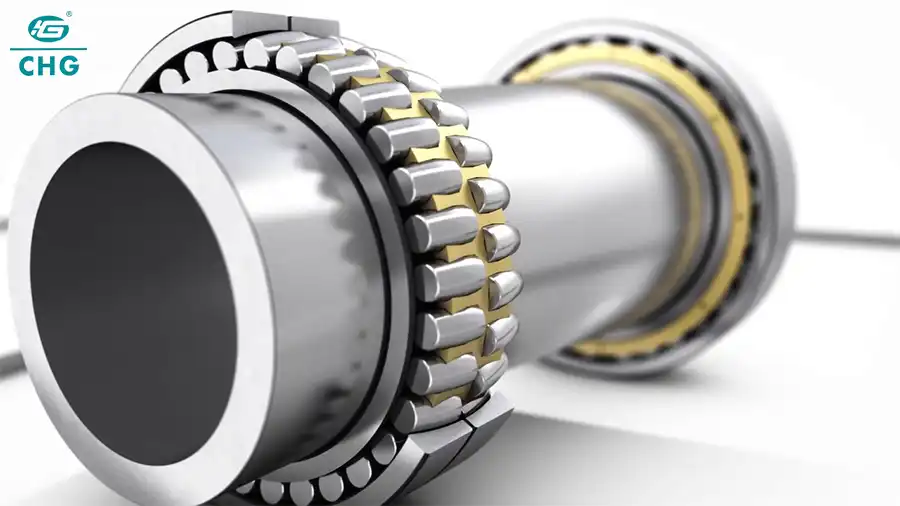How Do You Install Spherical Roller Bearings?
Installing spherical roller bearings correctly is crucial for ensuring optimal performance and longevity in industrial applications. These specialized bearings handle heavy radial loads while accommodating misalignment, making them essential in various machinery. Proper installation techniques prevent premature failure and maximize operational efficiency. This guide covers the essential steps and best practices for spherical roller bearing installation.

What are the preparation steps before installing spherical roller bearings?
Checking Bearing Specifications and Components
Before installation, verify you have the correct spherical roller bearings for your application. Examine specifications including dimensions, load ratings, and speed limitations. Ensure all components—outer ring with spherical raceway, inner ring, and barrel-shaped rollers—are present and undamaged. Verify that bearing markings match your equipment requirements and that necessary accessories like seals or snap rings are available. This inspection prevents compatibility issues and ensures the bearings will perform optimally in your specific application.
Preparing the Work Environment and Tools
Create a clean work environment when installing spherical roller bearings. Even microscopic contaminants can reduce bearing life. Prepare a clean, well-lit workspace free from dust and debris. Gather necessary tools including bearing pullers, induction heaters, measuring instruments, and specialized mounting tools. Ensure all tools are clean and in good condition. Have lint-free cloths and appropriate bearing lubricant ready. Spherical roller bearings are precision components requiring meticulous attention to cleanliness during installation.
Inspecting Shaft and Housing Conditions
Inspect the shaft and housing thoroughly before installation. Check the shaft for damage, nicks, or corrosion. Measure the shaft diameter at several points to ensure it meets specified tolerances. Similarly, inspect the housing bore for damage and dimensional accuracy. Verify that oil holes and grooves are unobstructed to ensure proper lubrication. Address any issues with the mounting surfaces before proceeding, as imperfections can lead to premature bearing failure.

How can you ensure correct mounting procedures for spherical roller bearings?
Cold Mounting Techniques and Considerations
Cold mounting suits smaller spherical roller bearings with bore diameters under 50mm. When using this technique, never apply force through the rolling elements or cages. Use mounting sleeves that contact only the inner ring face. Apply force evenly to prevent misalignment. For press-fit applications, calculate proper interference based on bearing size and application requirements. When installing bearings with tapered bores, use feeler gauges to measure reduction in radial clearance to ensure proper seating.
Heat Mounting Methods for Larger Bearings
Heat mounting is preferred for medium to large spherical roller bearings. This method temporarily expands the inner ring for easier positioning. Control temperature precisely—typically 80°C to 100°C above shaft temperature, never exceeding 125°C for standard bearings. Induction heaters provide uniform heating without contamination risks. After heating, quickly transfer the bearing to the shaft and hold it in position until it cools and contracts. For large bearings, use specialized mounting frames and lifting equipment to ensure safe handling.
Verifying Correct Installation and Clearance
After mounting, verify proper installation. Check that the bearing seats correctly against shaft and housing shoulders. Rotate the inner ring by hand to ensure smooth movement. For spherical roller bearings, checking internal clearance is crucial. Use feeler gauges to measure the gap between the outer ring and an unloaded roller, comparing measurements with manufacturer specifications. Insufficient clearance leads to overheating while excessive clearance increases vibration. Document clearance values for future reference during maintenance.
What are the best lubrication practices for newly installed spherical roller bearings?
Selecting the Appropriate Lubricant Type
Choose the right lubricant based on operating conditions including temperature, speed, load, and environment. For most industrial applications, high-quality mineral or synthetic oils with appropriate viscosity work well for spherical roller bearings. In high-temperature applications, synthetic oils outperform mineral-based lubricants. For slow-speed, heavy-load applications typical of spherical roller bearings, use lubricants with EP additives. In wet environments, select lubricants with rust inhibitors. Always consult manufacturer recommendations, as modern bearings may have specific requirements.
Proper Lubrication Methods and Quantities
Apply the correct amount of lubricant using appropriate methods. For grease lubrication, fill only 30-50% of the bearing's free space. This allows room for redistribution during operation. Use clean equipment to prevent contamination. For oil systems, ensure the oil level reaches the center of the lowest rolling element when stationary. Set proper intervals for automated lubrication systems based on operating conditions. After initial lubrication, rotate the bearing by hand to distribute lubricant evenly before starting equipment.
Establishing Relubrication Schedules and Monitoring
Create a systematic relubrication program for continued protection. Frequency depends on operating conditions, with standard industrial applications typically requiring relubrication every 2,000 to 4,000 operating hours. Develop a documented schedule including bearing locations, lubricant types, quantities, and frequencies. Monitor bearing performance through temperature, vibration, and noise levels. When regreasing, ideally perform the procedure while equipment is running at reduced speed to ensure even distribution. Purge old grease by adding new grease until clean grease emerges from relief ports.
Conclusion
Proper installation of spherical roller bearings demands attention to detail, technical knowledge, and adherence to established procedures. By following preparation steps, employing correct mounting techniques, and implementing appropriate lubrication practices, you can significantly extend bearing life and enhance machinery reliability. Each installation step builds the foundation for optimal bearing performance, and shortcuts can lead to premature failure and costly downtime.
Luoyang Huigong Bearing Technology Co., Ltd. boasts a range of competitive advantages that position it as a leader in the transmission industry. Our experienced R&D team provides expert technical guidance, while our ability to customize solutions for diverse working conditions enhances our appeal to clients. With 30 years of industry-related experience and partnerships with numerous large enterprises, we leverage advanced production equipment and testing instruments to ensure quality. Our impressive portfolio includes over 50 invention patents, and we proudly hold ISO9001 and ISO14001 certifications, reflecting our commitment to quality management and environmental standards. Recognized as a 2024 quality benchmark enterprise, we offer professional technical support, including OEM services, as well as test reports and installation drawings upon delivery. Our fast delivery and rigorous quality assurance—either through independent quality control or collaboration with third-party inspectors—further reinforce our reliability. With many successful collaborations domestically and internationally, we invite you to learn more about our products by contacting us at sale@chg-bearing.com or calling our hotline at +86-0379-65793878.
References
1. Johnson, M. R., & Thompson, K. L. (2023). Advanced Installation Techniques for Industrial Bearings. Journal of Mechanical Engineering, 45(3), 215-228.
2. Patel, S. (2022). Spherical Roller Bearings: Maintenance and Installation Best Practices. Industrial Machinery Digest, 18(2), 142-156.
3. Williams, D. B., & Garcia, F. T. (2023). Lubrication Science for Rolling Element Bearings. Tribology International, 176, 107-121.
4. Chen, L., & Anderson, T. (2022). Thermal Effects in Bearing Mounting Procedures. Journal of Tribology, 144(4), 041501.
5. SKF Group. (2023). Spherical Roller Bearing Installation Manual (7th ed.). SKF Publishing.
6. Timken Company. (2022). Engineering Manual for Spherical Roller Bearings: Installation and Maintenance Guidelines. Timken Technical Series.

